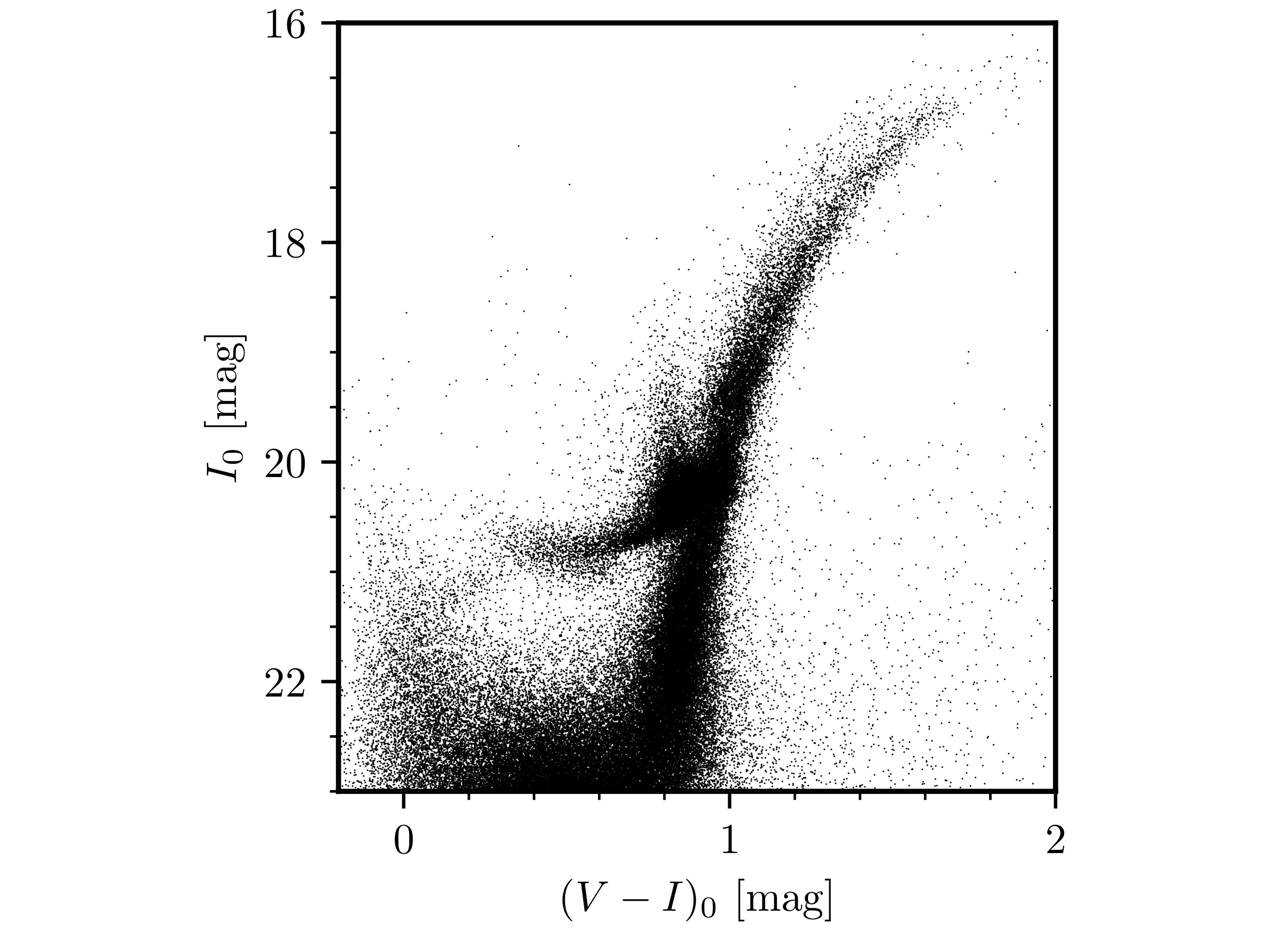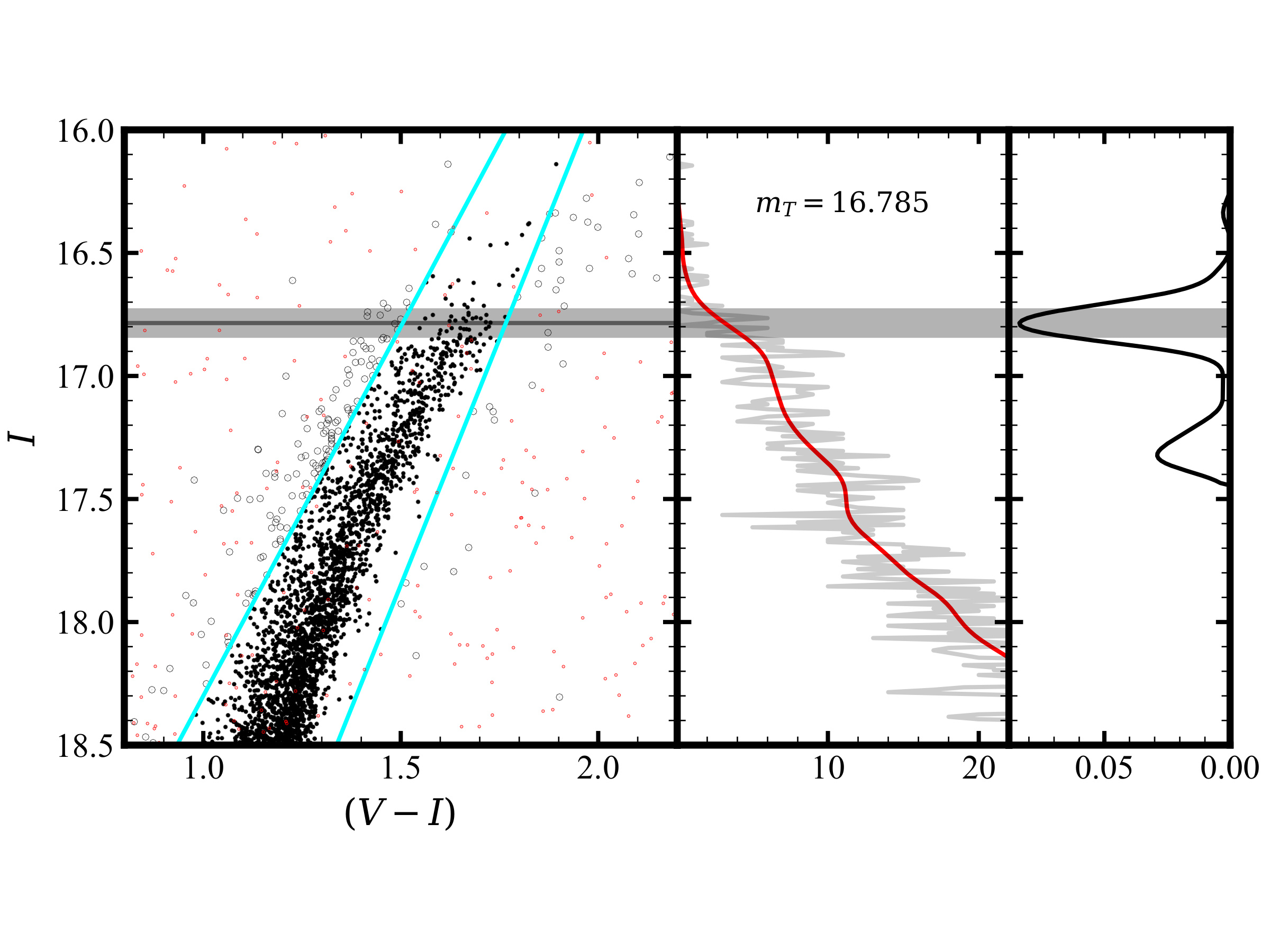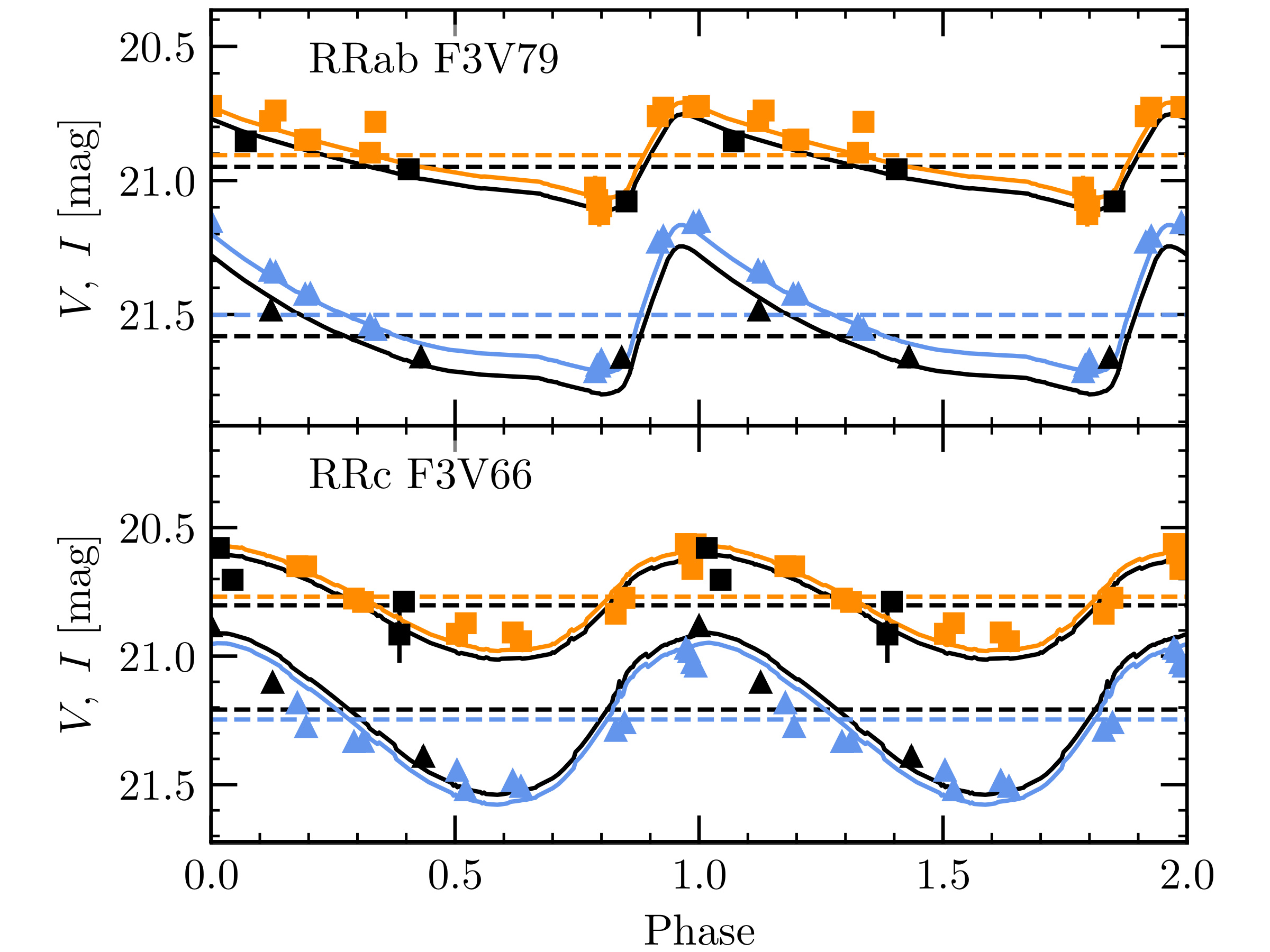Fornax dSph program
- Number of pointings: 9 IMACS + 4 HST
- Photometric catalog: 180,471 sources
- RR Lyrae light curves: 332
- Distance to Fornax: 143 ± 3 kpc
How fast is the Universe expanding?
A great debate over the expansion rate of our Universe is currently shaking cosmology. To measure this number more accurately, reliable distance measurements to neaby galaxies are essential. Using three independent approaches based on Population II stars, which avoid some of the systematic errors that make other methods challenging, we measured distances to the Fornax and Sculptor dwarf spheroidal (dSph) galaxies in Oakes et al. (2022) and Tran et al. (2022). This work helped set a "rung" of the cosmic distance ladder constructed by Freedman (2021).


